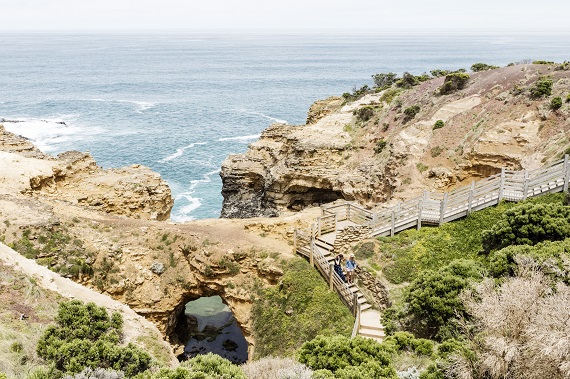Unsung Australia:
It's hardly surprising that there are a lot of amazing locations that not many people get to see in a country with such a wide variety of scenery. We reveal some of the most incredible hidden gems and off-the-beaten-path attractions in Australia, ranging from enigmatic geological wonders and unusual natural occurrences to ancient hidden gems and difficult-to-reach rock art.
Moreton Island, Queensland:
While most visitors go to Queensland's islands surrounded by coral reefs, not many travel to Moreton Island, which is located east of Brisbane, the state capital. There are many natural treasures on this large sand island, which is only a short ferry trip away. You may go wreck diving, ride a toboggan down a sand dune, and see wild bottlenose dolphins and whales (thousands of humpbacks move by from June to November). The decaying remains of fifteen ships that were purposefully sunk in the 1960s to form a break wall are teeming with vibrant coral, exotic fish, and inquisitive turtles.
The Grotto, Victoria:

The Great Ocean Road in Victoria is dotted with interesting rock formations. Many people avoid the Grotto whereas everyone pauses to view the London Arch and the Twelve Apostles. This interesting geological feature is located in the limestone cliffs to the west of Port Campbell and is definitely worth exploring. The Grotto, a sinkhole, archway, and cave all rolled into one, is visible from a viewing platform above or by descending the steps to the sea. For the best views of the arch with its rockpools and the ocean framed beyond, visit the lowest level during low tide.
Carnarvon Gorge National Park, Queensland:
Carnarvon Gorge is a veritable paradise in the dry sandstone region of central Queensland, surrounded by native Carnarvon fan palms, old cycads, ferns, floral plants, and gum trees. There are numerous important Aboriginal art sites scattered among its massive cliffs, boulder-filled rivers, and winding gorges. Two of its most striking features are the Cathedral Cave and Art Gallery, whose walls are covered in freehand paintings, ochre stencils, and rock engravings.
Kanku-Breakaways Conservation Park, South Australia:
This isolated and amazing Aboriginal heritage site is located close to the opal-mining town of Coober Pedy and is a part of the Antakirinja Matuntjara Yankunytjatjara people's traditional country. The sweeping, stony, and arid terrain is captivating, having once been submerged under an inland sea. For the most striking views of the reds, oranges, and whites, visit during sunrise or sunset. Although it's hard to imagine anything exists here, a variety of natural plants and animals can be found. As you explore, keep an eye out for fat-tailed dunnarts, wall Aroos, echidnas, and red kangaroos.
The Bogey Hole, New South Wales:
While swimming in Sydney's ocean pools is a must-do activity for most people, not many are aware of Newcastle's amazing Bogey Hole. It's not just a beautiful place to swim, but it's also believed to be Australia's first intentionally constructed ocean swimming pool. Convicts hand-carved it in 1819 on a rocky platform for Major James Morisset, the Commandant of Newcastle, to utilize for himself. Situated at the base of Shepherds Hill, the heritage-listed Bogey Hole pool is open to the public for free.
Montague Island, New South Wales:

Although Montague Island is the second largest island in the state, not many residents, let alone visitors, have visited. The protected nature reserve, located just offshore Narooma on the southern coast, is home to nesting seabirds, little penguins, and a sizable colony of seals. Additionally, turtles, dolphins, and whales visit its waters. Although the best time to watch the humpbacks passing by is from September to November, the island is worth visiting all year round due to its dramatic scenery, old lighthouse, and keeper's quarters.
Undara Volcanic National Park, Queensland:
Explore underground lava tunnels in this little-known national park southwest of Cairns, which are reputed to be the largest in the world. The name Undara, which means "long way," refers to the tubes that were created around 190,000 years ago when a strong eruption forced lava into parched riverbeds. The molten lava below finally drained, leaving behind a network of hollow tubes, as the outer layer cooled and created a crust. There were spots along them where large caves formed, such the Archway, which is Undara's most famous feature. Only guided tours are able to access the tubes.
Flinders Island, Tasmania:
Flinders Island, located in the Bass Strait off the northeastern corner of Tasmania, is incredibly beautiful. Only 1,000 people call it home. It is one of the 52 islands that make up the Furneaux Group, which formerly served as a land bridge connecting the island state and mainland Australia. Although few people outside of Tasmania have seen the rocky isle rising out of the wild oceans, few people have heard of the jagged island with its enormous granite mountains and rocky outcrops ablaze with orange lichen. It is well-known locally for its amazing seafood (especially crayfish, scallops, and abalone) and rugged vistas.
.png)
